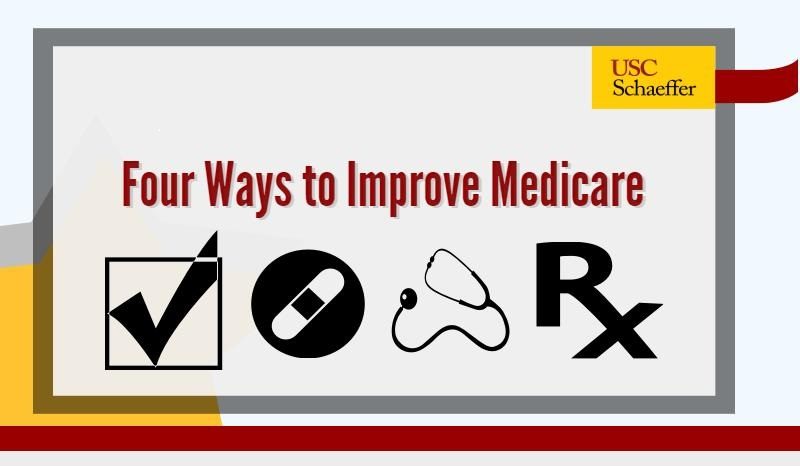Medicare has undoubtedly helped millions of seniors and disabled adults receive health coverage since being signed into law in 1965. Today, Medicare covers 55 million beneficiaries across the US. In the coming decades though, Medicare faces a complex multitude of competing environmental pressures. First, the sheer size of the Medicare-eligible population is projected to increase significantly: according to the US census, by 2029 all the baby boomers will be 65 or older which will account for 20 percent of the US population. Adding to that increased pressure is the trends showing this population will be living with more disabilities and living longer than previous generations.
With the increase in beneficiaries from the aging baby boomer generation inevitably will come a larger price tag. This is leading many policy and industry experts to speculate and worry about the program’s long term ability to provide quality and affordable coverage.
This impending perfect storm could be the catalyst for analysts and policymakers to look at the programs comprehensively and identify ways to improve Medicare. Researchers from the Schaeffer Center have published a body of work analyzing the Medicare programs and their effects and outcomes. Through this research four evidence-based recommendations which would measurably improve the delivery of services have been found:
- Help people pick the right Medicare plans for them.
- Rethink benefit design to improve medication adherence and reduce health disparities.
- Determine value in medical innovations.
- Curb fragmented prescribing of opioids.
 Help people pick the right Medicare plans for them: Center experts found that when Medicare beneficiaries choose a prescription drug plan, poor plan choices result in extra costs and reduced access to necessary drugs. Analysis of administrative data on medical claims in Medicare Part D “suggests that less than 10 percent of individuals enroll in plans that are ex post optimal with respect to total cost (premiums and co-payments).” This adds up to consumers losing on average $300 per year. The data suggests that in Medicare Part D only about 10% of consumers switched plans every year and on average, plan choices actually worsened for those who did not switch.
Help people pick the right Medicare plans for them: Center experts found that when Medicare beneficiaries choose a prescription drug plan, poor plan choices result in extra costs and reduced access to necessary drugs. Analysis of administrative data on medical claims in Medicare Part D “suggests that less than 10 percent of individuals enroll in plans that are ex post optimal with respect to total cost (premiums and co-payments).” This adds up to consumers losing on average $300 per year. The data suggests that in Medicare Part D only about 10% of consumers switched plans every year and on average, plan choices actually worsened for those who did not switch.
Rethink benefit design to improve medication adherence and reduce health disparities: Medicare Part D beneficiaries who do not qualify for a low income subsidy faced a gap in prescription drug coverage which causes a disruption in drug therapy among minorities and individuals with low socioeconomic standing. This gap, frequently referred to as the doughnut hole, resulted in lower adherence to medications prescribed to treat chronic disease and other health problems. Minorities were particularly impacted, leaving them vulnerable to adverse health outcomes. The rate at which Hispanics reduced use of diabetes-related medications in the coverage gap was twice as high as whites, while blacks decreased use of diabetes-related medications by 33% more than whites.
Determine value in medical innovations: Policymakers acknowledge that new medical technologies can improve patient care. Yet they often focus on how these new products and services put fiscal strain on government budgets rather than their benefit to society. Recently, the Medicare Payment Advisory Commission cited medical technology as having the greatest impact on health care spending. Nevertheless, medical innovations can provide health benefits that outweigh their additional costs. By applying a framework for the quality-adjusted cost of care, which takes into account both value and direct financial costs, policymakers can gain more complete insight into the value of investments from Medicare into new medical technologies that better takes into account patients’ health outcomes.
Curb fragmented prescribing of Opioids: Finally, our research shows fragmented prescribing of opioids is causing additional problems. Across Americans of all ages, deaths from unintentional opioid overdose grew fourfold from 1999 to 2008 largely because of prescription opioids. Fragmented prescribing-whereby no specific physician is solely responsible for a patient’s needs for opioid prescription-or intentional doctor shopping by patients, lead to adverse health outcomes. We found that Medicare patients who received prescription opioids from four or more unique providers had twice the annual rate of hospital admission than those who received prescription opioids from only one provider.
If put into practice, these evidence-based recommendations and strategies could go a long way towards improving the healthcare delivery and outcomes for beneficiaries as well as improving the economic efficiency and sustainability of the program.

You must be logged in to post a comment.